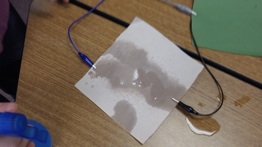CONSERVATION INVENTIONS

2013
NOTE: UPPER MENU ITEMS MAY NOT LOAD PROPERLY IN ALL WEB BROWSERS (E.G. CHROME).
What kinds of resource conservation problems are 2nd and 3rd-graders interested in solving?
Well, in addition to the the more expected ideas to save things like water, food and electricity, they also wanted to find ways to avoid wasting things like clothing and bug spray!
We’re glad that you have found our project website! Here you’ll find links to students’ projects, as well as videos describing their work and their learning. In the comments sections we would welcome any questions, suggestions or feedback that you may have.
**This site is still a work in progress. Please stay tuned for updates.**
Welcome!




A short description of the project:
Students were asked to brainstorm examples of ways in which people waste resources. Then, they generated possible solutions to the problems. After choosing the most promising solutions, they were asked to create prototypes of inventions that might help solve the problems.
Armed with the children’s programming environment Scratch, as well as a PicoBoard sensor board and a Makey Makey, teams of two or three students set out to see what they could create. Their invention prototypes combined both “real world” and “virtual” elements, using real world data and actions to trigger on-screen activity.
New Century School has an environmentally-integrated curriculum. This year, our three primary themes have been food, energy and water. This “conservation inventions” project was part of a unit about energy.
For this project, students needed to think about conservation of energy and resources, and also about the different kinds of real world inputs and information that could be used in their inventions. These included light energy, sound energy, and electrical resistance, which were each detected and converted to numerical values using PicoBoards, and then used by students in their Scratch projects.
Makey Makeys provided another way for activity in the “real world” to be sensed and translated into messages that could be used in the students’ computer programs.
Idea generation, learning how to use the equipment, writing and de-bugging computer “code,” collaborating and cooperating with partners, communicating about their projects with a larger audience--each stage of this project presented its own unique challenges. I’m proud of the collaboration, enthusiasm, creativity and perseverance that these 7, 8 and 9 year-olds brought to their work.
Larry Gundlach
larry.gundlach@verona.k12.wi.us